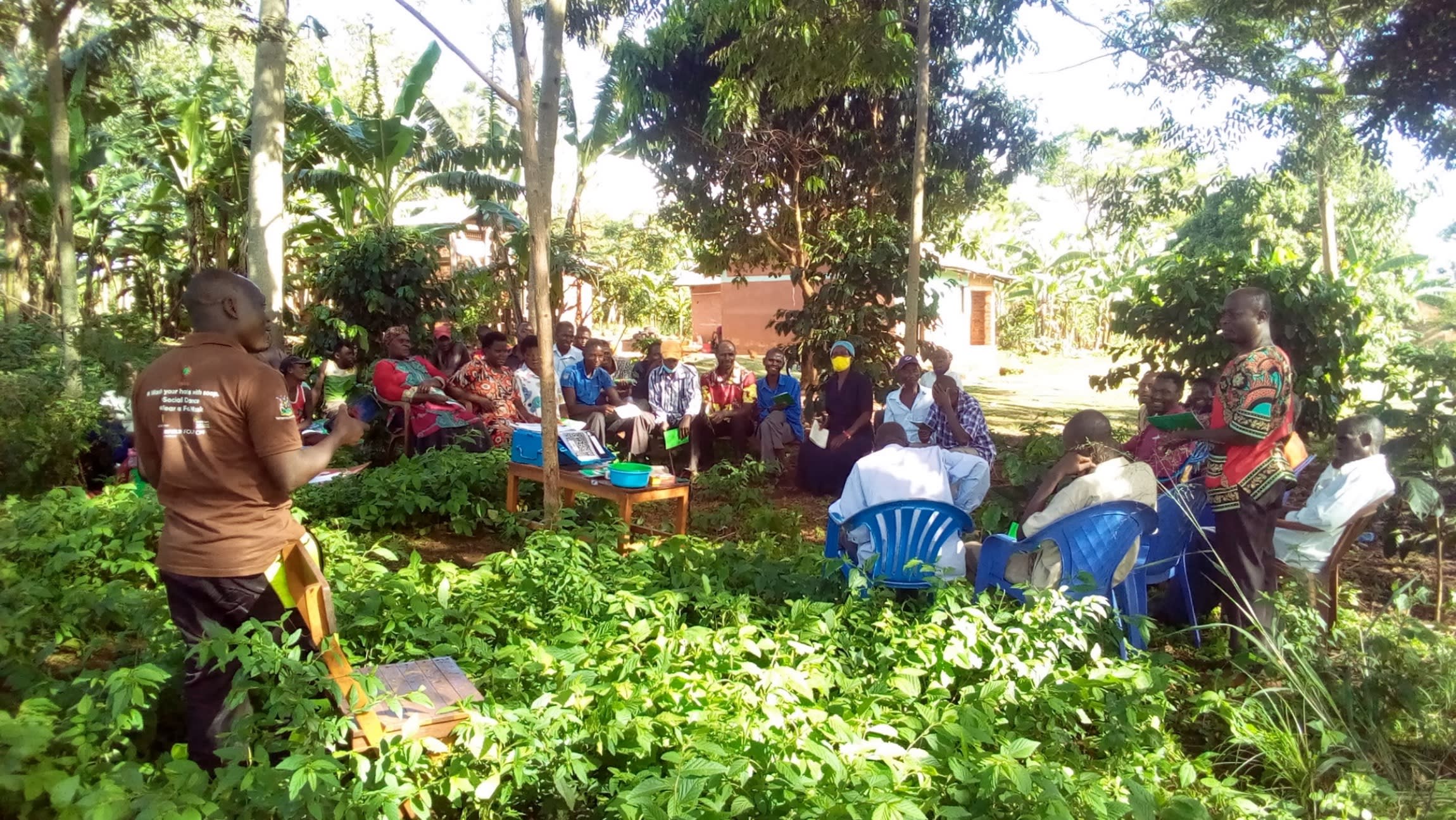Byerima is hilly with fertile soils, and the community members are engaged in both commercial and subsistence farming. The village is covered with sugarcane plantations for commercial purposes and food crops like maize, beans, cassava, groundnuts, sweet potatoes, and many others for subsistence purposes.
The 900 people living here do not have a reliable source of water. Each day, people have to pass two nonfunctional wells searching for water, explained Local Council member Nicholas Balinda. He said that families would often all go to fetch water together because it is so far.
"One takes about thirty minutes to an hour standing in the long queue waiting for water. Getting water from this water point and in the village is negatively affecting my schedule, especially in the evening hours since there are no alternative nearby water sources,” added Beatrice Atuhairwe, a 24-year-old single mother.
“This water point is in poor condition and hard to pump. It is always crowded because of the huge population. Over 100 households from the three sub-villages of Kyakabasarah, Ijamirembe, and Kinenabuhere collect water from this water point."
We also met young teenager Geoffrey, who travels more than a mile each way to get water. He, too, said that the wait is very long to get water once he arrives at the well. There is no order, so fights break out often since people are rushing to get water at the end of the day and get home before dark.
"As a child, it becomes hard to get water and I end up spending a lot of time and going back home very late at night, putting my life at risk of getting into accidents and meeting dangerous animals, like dogs and snakes," he said.
Here’s what we’re going to do about it:
Rehabilitated Well
We are going to restore water to the broken-down borehole. Since this water point is located at the center of the village and easily accessible by the majority of people when this borehole is restored to its original status, it will provide the community with easy access to clean and safe water. We will remove the old pump, clear out the well, reinstall a new stainless steel pump, and build a new well pad to protect the water.
In addition to the rehab, we are going to rehabilitate the other borehole for this community to alleviate the pressure on a single water point. We estimate that a single water point can serve about 350 people, so two reliable water points will help ensure that there are no longer any long lines here. Go here to learn more about the accompanying project.
Training
Training’s main objectives are the use of latrines and observing proper hygiene practices since these goals are inherently connected to clean water provision. Open defecation, water storage in unclean containers, and the absence of handwashing are all possible contaminants of a household water supply. Each participating village must achieve Open Defecation Free status (defined by 1 latrine per household) before the pump installation for a shallow hand-dug well.
This social program includes the assignment of 1 Community Development Officer (CDO) to each village. The CDO encourages each household to build an ideal homestead that includes a latrine, handwashing facility, a separate structure for animals, a rubbish pit, and a drying rack for dishes.
We also implement the Community-Led Total Sanitation (CLTS) approach with each of our village partners. This aims to improve the sanitation and hygiene practices and behaviors of a village. During these sessions, village leaders naturally emerge and push the community to realize that individual households' current practices – particularly the practice of open defecation – are unhealthy and affect the entire village. CLTS facilitates a process in which community members realize the negative consequences of their current water, sanitation, and hygiene behaviors and are inspired to take action. Group interactions are frequent motivators for individual households to build latrines, use the latrines, and demand that other households do the same.
Improved Sanitation
The aim is that all households own an improved latrine. Many households do not use a latrine but use the bush. Due to open defecation, feces are spread all over the village. This leads to waterborne diseases and contamination of groundwater and surface water. Our aim is that the community can live a healthy life free of preventable diseases. We endeavor that people will have both access to sustainable, clean water and access to sanitation at the end of our presence in the community. We have now organized families to form digging groups for latrine construction and empower them with the tools they need.

 Borehole Well and Hand Pump
Borehole Well and Hand Pump




























